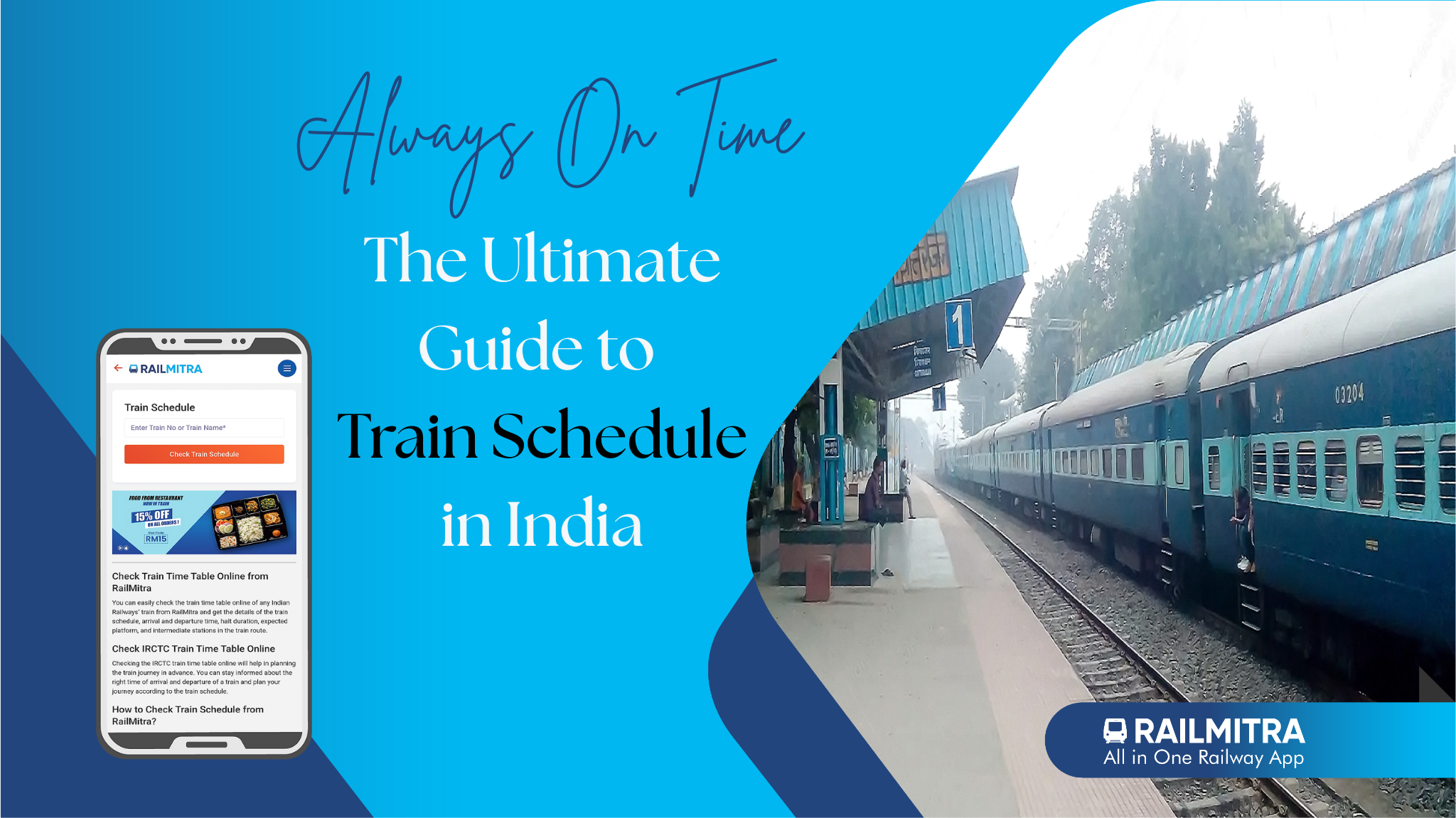
When it comes to traveling in India, the train system is one of the most efficient and cost-effective ways to get around. However, understanding train schedules can be a daunting task for both seasoned travelers and newcomers alike. With over 7,000 stations and more than 13,000 trains running across the country, it’s easy to feel overwhelmed. But don’t worry! This ultimate guide to train schedules in India will help you navigate the complexities of train travel.
Understanding the Basics of Train Schedules
A typical Indian Railway train schedule includes several key pieces of information, which can be overwhelming at first. But breaking it down into components makes it easier to understand. Here’s what you should expect in any train timetable:
-
Train Number and Name: Every train in India is assigned a unique number and name. The number usually indicates the train’s type (e.g., express, superfast, etc.), and the name can help identify the route or destination.
-
Departure and Arrival Times: The train schedule lists the exact times of departure from the origin station and expected arrival at the destination. Be mindful that these are approximate, and delays can occur.
-
Intermediate Stations: The timetable will show all the stations the train stops at, with the arrival and departure times for each. This helps you know where to board and get off, and how long the train will halt at each station.
-
Train Type: Different trains have different characteristics. Some trains like Rajdhani Express or Shatabdi are premium services with faster travel times, while others like local or passenger trains may take longer.
-
Classes of Travel: Indian trains offer various classes of travel (e.g., Sleeper Class, AC 3-Tier, AC 2-Tier, First Class), and the schedule will indicate the type of coaches available on a specific train.
Tools to Check Train Schedules
While you can always find train schedules on official railway websites, these platforms can sometimes be cumbersome and hard to navigate. Fortunately, there are several tools, like RailMitra, that provide easy access to real-time information. RailMitra simplifies the process of checking the train schedule with features like:
-
Real-Time Updates: Get live updates on the train’s departure, arrival times, and platform numbers.
-
Seat Availability: Check for available seats on specific trains for your chosen travel dates.
-
PNR Status: Track the status of your ticket, including whether it is confirmed or waitlisted.
These tools can save you time and reduce the confusion that often arises when reading complex train schedules.
How to Read a Train Schedule Efficiently
Reading train schedules effectively can make your travel experience much smoother. Here are some tips to get the most out of your train timetable:
-
Check for Delays: Always verify whether your train is running on time, especially if you’re traveling long distances. Delays can often be found on dedicated sections of the schedule.
-
Track Multiple Routes: If your train is delayed or canceled, you can look up alternate routes and trains to ensure you still reach your destination on time.
-
Know the Platform Number: Train schedules will sometimes list the expected platform number for your train. This can save you time and energy at busy stations.
Seat Availability and Booking
Train schedules not only help you plan your travel but also aid in booking your seats. Knowing which train to board is one thing, but ensuring you have a seat on that train is another. Here’s where seat availability comes into play:
-
Check Availability in Advance: Indian trains often sell out quickly, especially during peak travel seasons. It’s a good idea to check seat availability on platforms like RailMitra ahead of time and book your ticket early.
-
Waitlist and RAC: If you’re unable to get a confirmed seat, you might end up on a waitlist or Reservation Against Cancellation (RAC). RailMitra allows you to check your status in real-time.
Train Timing and Coordination
Understanding the train time is crucial for planning your journey. Indian trains may not always run according to the scheduled time, so it’s wise to check the timings again closer to your departure date. Always arrive at least 15 minutes before the scheduled departure time to avoid any rush or last-minute confusion.
FAQs
Q1: How can I check a train’s schedule in India?
A1: You can check train schedules on official railway websites, or use user-friendly platforms like RailMitra that provide real-time updates and easy navigation.
Q2: What is the best time to book a train ticket in India?
A2: It’s advisable to book your ticket as early as possible, especially during peak seasons like festivals or summer vacations. Early bookings ensure better seat availability.
Q3: How accurate are train timings in India?
A3: Train timings are generally accurate, but delays are common due to various factors such as weather, track maintenance, and congestion. It’s always a good idea to check real-time updates.
Q4: Can I get the real-time status of my train?
A4: Yes, RailMitra provides live updates on train status, including delays, current location, and expected arrival times.
Q5: How do I check the seat availability for a specific train?
A5: You can check seat availability for any train on platforms like RailMitra by entering your travel date, train number, and preferred class.
Conclusion
Mastering the art of reading Indian train schedules can significantly improve your travel experience. With resources like RailMitra, understanding train timings, seat availability, and real-time updates has never been easier. Whether you’re a frequent traveler or a first-timer, this guide ensures you’re always prepared for your next train journey across India. Happy traveling!